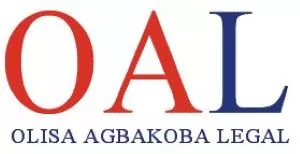- within Technology topic(s)
- within Technology, Real Estate and Construction and Family and Matrimonial topic(s)
INTRODUCTION
Artificial intelligence (AI) has rapidly moved from experimental labs into the heart of creative industries, and filmmaking is no exception. The rise of generative AI tools means that filmmakers today can produce realistic visuals and create entire universes from just the prompt of a few words. We have even seen real-time scenarios where it has simulated and enhanced real-time actors' performances with just a few prompts. Examples can be seen with the last winner of the Oscars 2025 Best Actor Award to Adrien Brody, in the film "The Brutalist".1 The director Brady Corbet himself has acknowledged the fact that there was indeed use of AI to enhance the Hungarian of the Actor's character.
This is just one of the recent embraces of the use of Artificial Intelligence as a tool in filmmaking. We can find another example in the Amazon Prime Original video biblical based series "House of David", where there was a prominent use of AI in creating the visual perspective of the scene in Episode 6 in the origin story of the Giants. The series creator and showrunner Jon Erwin gave testament to it, stating, "The entire scene is driven with generative AI tools as the horsepower to the scene. What we found in these tools works when combined with traditional tools ". He also further stated that the initiative to make use of AI in the production process stemmed from the need to accommodate their ambitious creative visions under a budget. In all of season one, there were a total of 72 shots incorporated that involved the use of AI. "People can make cool images, certainly, and use these tools sort of as consumers, but to really use them in professional ways, it really is how you stack tools together that matters". 2
With the mainstream acceptance of Artificial Intelligence, this promises efficiency and creativity on an unprecedented scale. However, it also raises difficult questions about authenticity, intellectual property, and the future of human talent in cinema.
Netflix's recent release of its AI content production guidelines3 signals that the industry is beginning to take these concerns seriously, and for filmmakers? The challenge now is clear: How to balance the enormous potential of AI with the need to protect creativity, ethics, and audience trust.
This article explores the pros and cons of using AI-generated content in filmmaking, highlighting the opportunities as well as the risks that industry players must carefully navigate.
Let's take a look at some of the Upside and Downside of filmmaking
Advantages and Upside
1. Efficiency and Cost Savings
One of AI's most immediate advantages is speed. Pre-production stages such as storyboarding, set design, or concept art, which traditionally take weeks, can now be accomplished in hours using AI image-generation tools. Visual effects (VFX) departments are also exploring AI to automate labour-intensive processes like rotoscoping or background creation, which often takes a lot of time to process, can now be done in seconds with the initiation of a prompt. And for independent filmmakers or small studios with limited budgets, this can be transformative. Instead of spending heavily on preliminary designs, they can allocate more resources to critical areas like casting or post-production. In an industry where time literally equals money, AI can streamline workflows and reduce overhead costs.
2. Creative Expansion
AI is not just about efficiency; it can also serve as a new creative canvas. These AI generative tools make it possible to imagine and create entire worlds and universes that would have been expensive or technically impossible to shoot. A filmmaker can visualise a dystopian cityscape, simulate different lighting effects, or de-age characters convincingly, all without requiring extensive physical resources. This creative flexibility allows filmmakers to push boundaries. For instance, science fiction and fantasy genres can benefit greatly from AI-driven visualisations, expanding possibilities for storytelling in ways that practical effects or CGI alone might struggle to achieve.
3. Accessibility for Indie Filmmakers
Perhaps the most overlooked benefit of AI is its democratising effect. Historically, blockbuster studios with deep pockets dominated cutting-edge filmmaking because of the high costs associated with visual effects and large-scale productions. With AI, even a solo creator or small team can generate film-quality content. This gives opportunities for new voices in cinema, particularly from underrepresented communities that may lack traditional industry backing. AI tools could enable a more diverse and inclusive filmmaking ecosystem, where creative ideas matter more than financial capacity.
4. Risk Mitigation and Pre-Visualisation
Another promising use of AI is in the Pre-production stage, and that can be seen in pre-visualisation. This essentially means creating a rough version of a film before production begins. Directors use Previz to test how a scene looks, adjust camera angles, and predict potential continuity errors, and all these have been aided with AI-assisted tools. AI helps directors and production teams anticipate challenges and refine their creative vision before stepping onto the set, and this reduces risks during actual filming, saving both time and money.
The Disadvantages and Potential Downside of AI in Filmmaking
While the benefits are compelling, AI use in filmmaking is far from risk-free.
1. Ethical and Legal Risks
The most pressing concern is intellectual property. Many generative AI tools are trained on vast datasets scraped from the internet, often including copyrighted images, films, or artwork without explicit permission. If a filmmaker uses AI-generated visuals that inadvertently replicate someone else's work, they risk lawsuits or reputational damage.
Moreover, ownership of AI-generated content itself remains a legal grey area. Can a filmmaker claim copyright over a scene created entirely by AI? In most jurisdictions, copyright law still requires a "human author," leaving AI-generated works in uncertain territory. So this leaves room for questions and uncertainty in a big industry like filmmaking that needs certainty to enable a secure working environment.
2. Authenticity and Audience Trust
Following Netflix's recent release of the 2024 documentary "What Jennifer Did", the controversy surrounding the documentary is a cautionary tale as the film used AI-generated imagery to recreate events, and some go as far as believing the audio was tampered with and edited to suit the production's narrative, as there were no real interviews of the victims of this documentary.4 Critics argued that it blurred the line between fact and fiction, potentially misleading viewers. Documentaries and biopics rely on audience trust, and AI imagery, no matter how realistic, can undermine that trust if not clearly disclosed. Audiences may also become sceptical of film content if they feel manipulated by synthetic images or AI-generated performances. In an era of deepfakes and misinformation, transparency about AI usage is crucial. Considering the major consumption of Filmmaking products is to connect with the audience and viewers on a human level.
3. Threat to Human Creativity and Jobs
Perhaps the most emotional debate around AI in film is its impact on talent. Writers, actors, and crew members worry that studios may use AI to cut costs by replacing human labour. This fear was central to the 2023 Hollywood strikes, where unions fought to limit AI's role in replacing performers' likenesses or generating scripts.5 Artistic storytelling has always been driven by human experience, empathy, and intuition, which qualities AI cannot replicate. And over-reliance on these generative tools could lead to formulaic, soulless content, undermining the very creativity that defines cinema.
4. Data and Privacy Concerns
AI's reliance on training data raises privacy issues, particularly when it involves human likenesses. Could an extra's face, once scanned, be reused endlessly without consent?
Netflix's guidelines explicitly forbid using AI to replace union-covered talent, but the temptation remains for less-regulated productions. Additionally, confidential production data fed into AI tools may not always be secure. If sensitive footage or unreleased scripts are stored on third-party servers, filmmakers risk leaks, breaches, or unauthorised reuse.
The Balancing Act
The tension between opportunity and risk makes it clear that AI in filmmaking cannot be treated casually. Netflix's five guiding principles: Respecting copyright, Protecting talent, Ensuring transparency, and limiting AI outputs to approved contexts, offer a blueprint for responsible adoption.
Ultimately, AI should be viewed as a supplement, not a substitute. It can assist with efficiency, broaden creative horizons, and democratise access, but it should not displace the human artistry that defines cinema. An example can be seen with the Writers Guild of America's 2023 strike and the resolution met by the guild with the Alliance of Motion Picture and Television Producers.6 Guidelines were established for projects subject to their agreement. With these guidelines highlighting
- AI can't write or rewrite literary material, and AI-generated material cannot be used to undermine a writer's credit.
- A writer can choose to use AI when performing writing services if the company consents and provides that the writer follows applicable company policies, but the company can't require the writer to use AI software (e.g., ChatGPT) when writing.
- Companies must disclose to the writer if any materials given to the writer have been generated by AI or incorporate AI-generated material.
- The WGA reserves the right to assert that exploitation of writers' material to train AI is prohibited by their collective bargaining agreement or other law.7
With examples like this regulations can be put in place to ensure the monitored use of AI in Filmmaking, and this can help more as a tool than a threat to the pristine process of Filmmaking. Filmmakers who approach AI with this mindset will not only avoid legal pitfalls but also maintain the trust of their audiences.
Conclusion
The history of cinema is a story of technological disruption. The arrival of sound, colour, computer-generated imagery, and streaming platforms all reshaped the industry, often sparking fear before becoming accepted norms. AI represents the next wave of transformation. The question for filmmakers is not whether AI should be used, but how. Will it become a shortcut that erodes creativity and trust, or will it be harnessed as a tool to amplify human imagination?
The future of filmmaking may depend on how responsibly the industry answers this question. If handled with care, AI could be the collaborator that helps tell richer, more diverse, and visually stunning stories. If misused, it could compromise the very essence of cinema.
In this evolving landscape, we, however, think the wisest path for filmmakers is to embrace AI cautiously, while leveraging its power, while safeguarding the human spirit of storytelling.
Footnotes
2. https://variety.com/2025/artisans/features/house-of-david-ai-goliath-origin-sequence-1236341674/
4. https://www.decodingeverything.com/p/netflix-what-jennifer-did-ai-controversy
6. https://www.theguardian.com/culture/2023/oct/01/hollywood-writers-strike-artificial-intelligence
The content of this article is intended to provide a general guide to the subject matter. Specialist advice should be sought about your specific circumstances.




